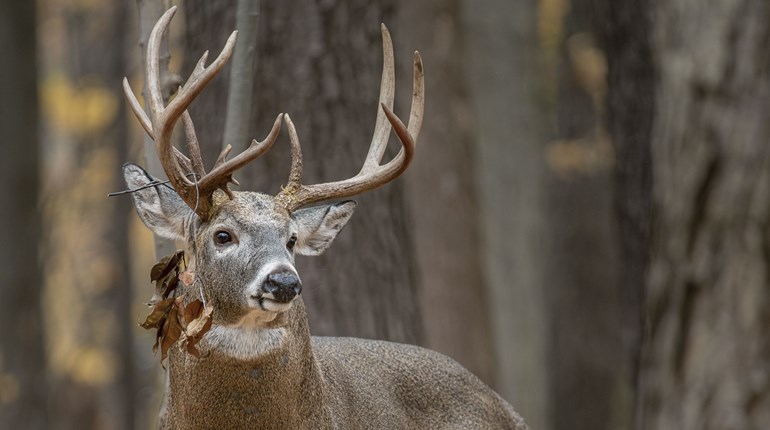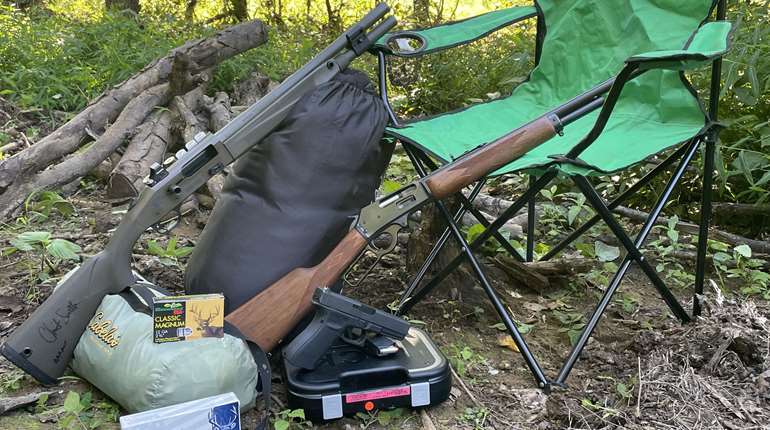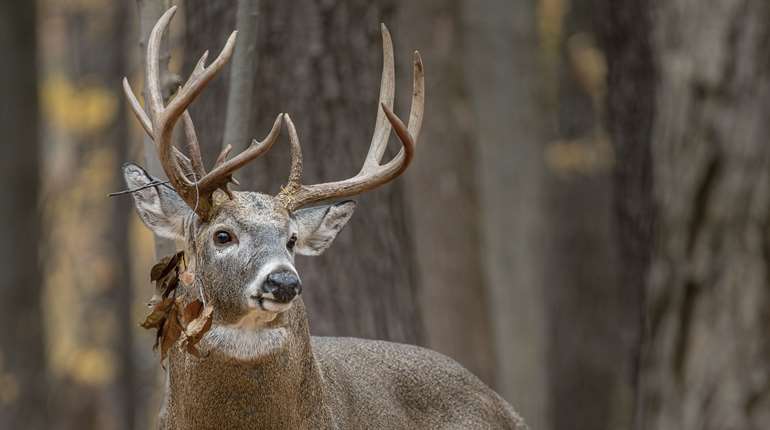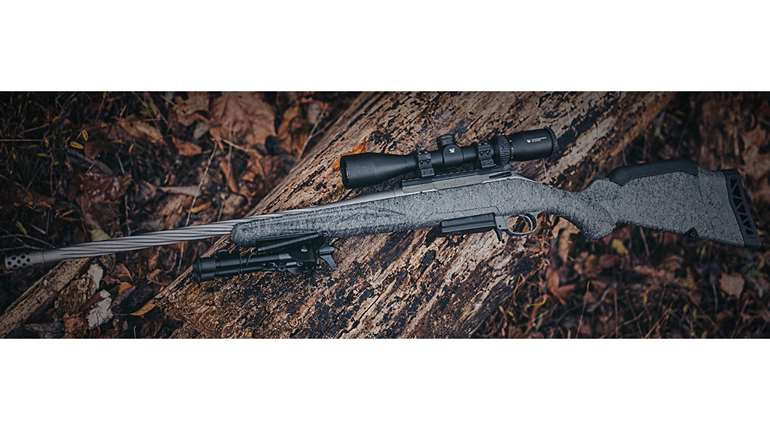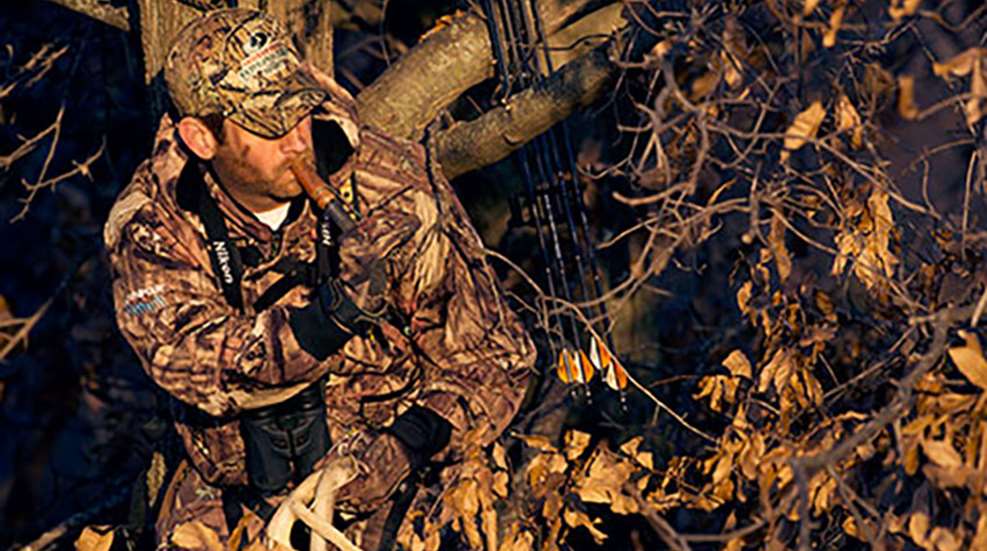
1. Hunt the Best Three Days of the Season
There is no better time to be in a tree trying to shoot a mature buck than those two or three days when the first doe comes into estrus. This occurs sometime during the first week of November in most areas. Bucks will be cruising, and some of them will be big. This is what we think of as classic rut hunting. Unfortunately, if you miss this first two-day frenzy you miss your best chance of the season to shoot a mature buck. It becomes more a case of hit-or-miss after that.
As the rut progresses, many does will come into estrus at more or less the same time, and the big buck of the woods can just barge in and take any one of them he wants. He doesn't have to spend much time or effort, or expose himself to hunters, by looking all over the place during the day. Mature bucks are harder to shoot during the middle of the rut than they are when the first (and last, for that matter) does are in estrus.
2. Know the Size of the Scare
I shot a buck in 1999 that had smelled me from the same stand two weeks earlier. He never saw me, but he turned tail and ran. The second time he came past, he was traveling the same trail but the wind was different. He never so much as looked my way. In fact, when I stopped him for a 30-yard bow shot, he turned and came right to the tree looking for the source of the soft bleat. He had completely forgotten his earlier scare.
Now contrast that with a buck I called in many years earlier but chose not to shoot. He came in warily and then saw me in the tree. He turned inside out getting away from there. I was hunting a stand on the other side of the field a week later when I saw him again approaching the prior stand. As soon as he got within 50 yards of it, he tensed up and made a wide circle around it, staring at the tree the whole time. There is no doubt he remembered that scare.
There is a lesson in these two stories. The size of the scare determines whether a buck will revisit your stand anytime soon and whether you should bother to keep hunting it. If the buck you are after only smells you, then that is not the end of the world. You could be a squirrel hunter, someone out for a walk, a fall turkey hunter, etc. They run into all of these in the fall. But when they spot you in a tree and blow out, they have obviously made you out as danger and pinpointed your location. Now it is time to move your stand.
3. Movement is Worse Than Shape
As humans, we have more cones than rods in our eyes so we are very adept at recognizing colors. However, deer have more rods than cones in their eyes so they are much better at detecting motion than we are. The abundance of rods benefits them in two ways and you need to be aware of both of them.
You have to be motionless to fool deer. If you are motionless, you can sometimes get away with murder. Three times in my life, I have had deer walk within 10 yards of me when I was heading to a stand. They never saw me despite the fact that there was not a stick between us. I didn't move a muscle. They didn't register my form, but I assure you that had I moved so much as a hand, they would have turned inside out.
Think how easily you can see movement in the woods. If you are like me, movement is what you key on when spotting deer. Now, think about the fact that deer are much better at this than we are. In other words, don't assume that just because deer don't see you well when you are immobile they will not see you when you are fidgeting on stand or constantly alternating between standing and sitting. They will see you—and then you won't see them.
4. Focus on Food During the Second Rut
The second rut is elusive. You won't see bucks cruising around looking for does, though there is still a lot of breeding that takes place. It just takes place in a more subdued way. In good quality ranges typified by lots of nutritious food, as many as 75 percent of the doe fawns will breed their first year, biologists suggest. Generally, this breeding takes place late, a month or two after the primary rut.
When you start considering the number of doe fawns in the herd, you realize that getting them all bred is a sizable chore made more difficult by the fact that the hunting season has claimed a large number of the bucks. With all this breeding, why is it so hard then to shoot a nice buck during the late season?
Hunting pressure has pushed the remaining deer underground. They only move at night, and because the bucks are worn out their rutting intensity is reduced. They will still get it done, but it will take place primarily at night with little expended energy. The only exception I have seen is during the first wicked cold snap of the winter that brings the entire herd out to feed during daylight. Deer will approach the best food sources before dark with a great sense of urgency. If the cold snap coincides with the time when fawns are in estrus, some bucks will follow them.
It is not worth trying to target the second rut specifically because the bucks are not going to act as they did during the first rut. Instead, focus on feeding areas during cold snaps and hope for the best.
5. Weather Breaks Signal Increased Movement
I used to think a cold front was the key to success, and that is still true during most of the season. In fact, if you can catch a passing cold front in late October you will have some of the best hunting of the entire season. And in November, cold fronts make the bucks more comfortable searching for does in daylight. And, of course, the very first winter blast of the late season, especially if it is accompanied by snow, is a great time to be sitting over food. However, there is a second kind of weather break that is also productive.
During the late season, after a prolonged period of below-normal temperatures, a warm front will really get the deer moving. During most of the season, a warm front is the death knell of deer-hunting success, but during the bleak days of early winter it is the spark that lights their fire to move aggressively toward food—often in daylight.
6. Mature Bucks Do the Most Rubbing
Deer researcher John Ozoga cites scientific data that confirm bucks 31/2 years of age and older do most of the rubbing. In most parts of the country, a 31/2-year-old buck is a very good trophy. When you find lots of rubs, you have probably found an area where at least one of these bucks lives. Now you have a place to start.
There is another fact about rubs that also will help you set up good stands. Biologists have long held that mature bucks make the first big rubs of the year. These represent what they refer to as signposts. Scouting in early September, shortly after the bucks shed their velvet, will reveal these early big rubs. You should hunt them as soon as you legally can because they represent travel routes used by mature bucks. These usually occur in the cover and are a good place to intercept a buck as he heads toward his evening feeding area. I tend to hunt the feeding areas themselves, but my hunting areas usually aren't heavily pressured. In more pressured areas, you need to get into the cover to intercept evening bucks.
Early rubs that are far enough from field edges that you can slip in and hunt them undetected are also good morning sites. The sooner you can hunt these areas, the better your chances for success.
7. Some Bucks Are Nocturnal by Nature
There is a buck that lives on our farm that I would love to shoot. He is a big 10-pointer that turned 5 years old this year. I have seen him a grand total of one time during daylight in three years of hunting his area. I get consistent trail-camera photos of him, always at night.
No one hassles that buck, but he is nocturnal anyway. Unfortunately, some bucks just tend to be more nocturnal than others. I guess this information is more depressing than enlightening, because as deer hunters we have few options for dealing with nocturnal bucks short of drive-hunting. By the way, I don't hunt a certain buck until my trail cameras tell me he is moving in daylight. I focus on more killable deer.
But there is also some good news. These same nocturnal bucks often become active in daylight if they live long enough. I am not sure what changes in them once they get past 5 years old, but I have seen this happen over and over—and have taken advantage of it several times.
8. You Can Kill Bucks in October When They Disappear
Many bowhunters believe the middle of October is a poor time to shoot a nice buck because the bucks stop moving. Research takes a different point of view.
"One of the main reasons that deer disappear during the middle of October is simply a change in their diets," said Dr. Grant Woods. "They are feeding more on acorns inside the cover where they aren't as visible. Bucks will abandon their summer forage patterns when acorns start dropping. You may have patterned a buck during the summer only to have him disappear when October rolls around. Find out what the deer are eating and you'll find the bucks."
Grant emphasized this statement with some data. His telemetry data have shown that bucks are still active during mid-October. They just may not be active in the same places where you watched them all summer. If you aren't into bucks when the season opens, it is because you aren't hunting in the right place. Use an antlerless tag and shoot a doe to see what she has been eating. If that isn't possible, take a look inside the stomachs of any deer your friends shoot.
9. It's All About Food
I keep relearning this basic lesson: Finding deer is all about finding the food. Learn everything you can about the things deer eat in your hunting area (including preferred browse species) during the times you hunt. Then spend time scouting to find the best concentrations of these foods and hunt those spots.
If they are in the timber, such as on an oak ridge where acorns are dropping or in a honeysuckle thicket, they will produce action during both the morning and evening. If the preferred food source is an agricultural field, hunt it in the evening only.
Not only does food dictate where the deer will feed at night, but it also dictates where they will bed during the day. Data offered by David Morris, a well-respected whitetail expert, suggest that most deer will bed and live within a quarter-mile of their preferred food sources. That means finding the best food will also help you find the best concentrations of deer to make hunting more action-packed during all times of the day.
10. Good Access is Better Than Good Sign
Given a choice between a stand that overlooks great sign but is hard to get to without bumping into deer and one that has a low-profile entry route but overlooks mediocre sign, I'll take the great-access stand every time. Sure, we all want to hunt the best sign our hunting area has to offer, but sometimes it just can't be done without alerting deer. If you can get in and out of your hunting area without being detected day after day, eventually you will shoot a nice buck even if you aren't sitting over the very best sign on the place.This is one of the hard lessons most deer hunters eventually learn—usually the result of failures when blindly hunting great-looking sign. When it comes to shooting deer, getting in and out clean is more than half the game.
This is the key for both bowhunters and gun hunters. While bowhunters may rely more heavily on natural movement than gun hunters, you won't have success on opening day of the gun season either if the deer know you are there. The real contest on opening day is to be the one who slips into his stand without any deer knowing. Let the other guys bumble around and push the deer to you.
None of the points I have made in this article are particularly earth shattering, but collectively (if you apply them) they will make you a much better deer hunter. I try to learn something new every year, but it is amazing how I keep coming back to the fundamentals. You don't have to get elaborate to shoot a nice buck. Focus on the basics and then always look for ways to execute your plan better, and you will enjoy more than your share of the success.












